A Cave Is No Place for Humans, So DARPA Is Sending In the Robots
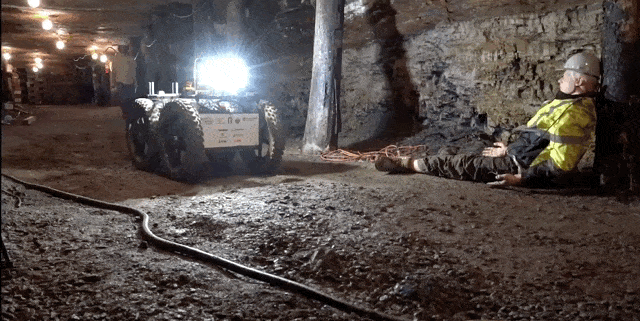
Outside its cavernous passageways, the mine's entrance is emblazoned in red lettering that reads "Safety Research Coal Mine." This site is just one of two mine systems at the Bruceton Research Center in Pittsburgh. They were once part of a full mine system but were split apart for research purposes after the U.S. Bureau of Mines leased 38 acres of land from the Pittsburgh Coal Company in 1910.
For more than a century, the U.S. government has been using these facilities to create and assess technologies that will help keep miners safe. The National Institute of Occupational Safety and Health's (NIOSH) Pittsburgh Research Laboratory tests everything you could imagine, from how coal dust behaves to how to improve rescue missions when disaster strikes.
But tests were put on hold for eight days this August. Instead, the mines served as a testbed for the Defense Advanced Research Projects Agency's (DARPA) latest endeavor: The Subterranean Challenge, or Sub-T for short.
A History of Innovation
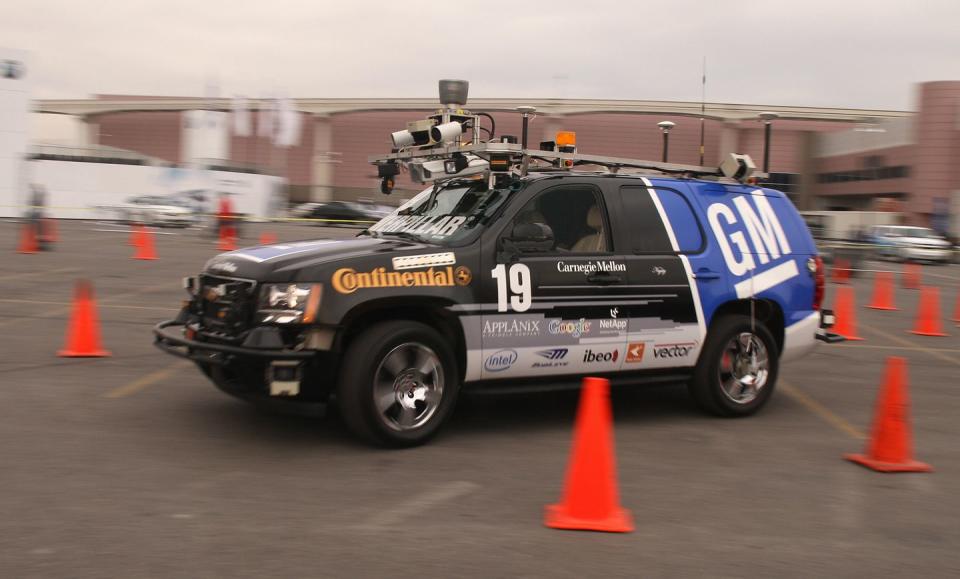
It's certainly not the first time DARPA has put out a challenge to the public. In 2007, DARPA kickstarted the autonomous vehicle industry with the Urban Challenge, where teams built self-driving vehicles capable of "performing complex maneuvers such as merging, passing, parking, and negotiating intersections."
Then in 2015, the DARPA created the Robotics Challenge in direct response to the humanitarian crisis during the nuclear disaster in Fukushima, Japan, four years earlier. The ultimate aim was to create robots with "sufficient dexterity and robustness to enter areas too dangerous for humans" and to mitigate impacts of natural disasters.
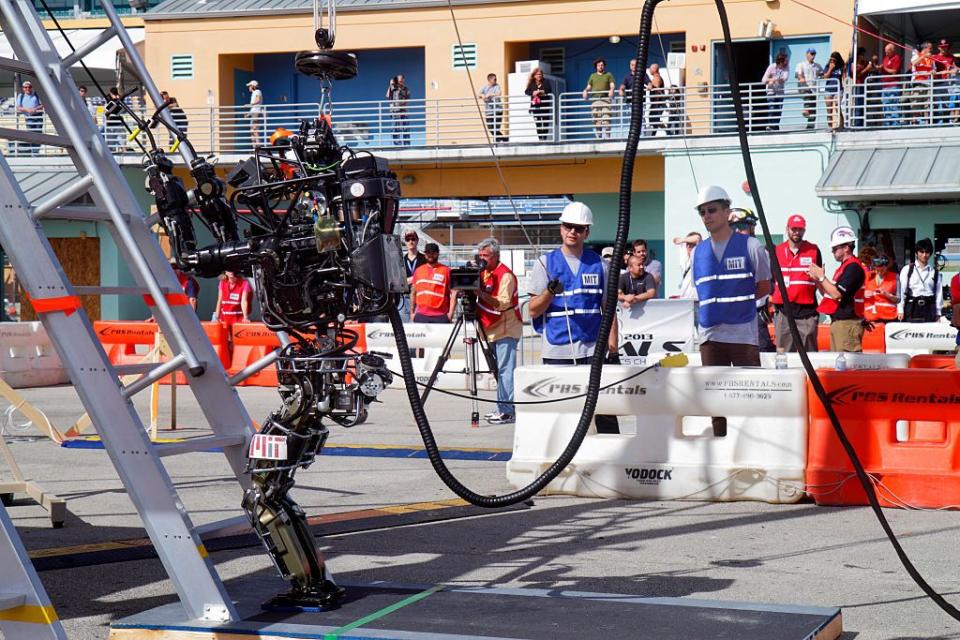
And the Sub-T challenge has similar lofty expectations. DARPA designed the challenge to "better equip warfighters and first responders to explore human-made tunnel systems, urban underground, and natural cave networks, while decreasing risk to human lives."
Why caves? The U.S. Army, for example, began preparing for underground warfare in North Korea's extensive tunnel system across the demilitarization zone. Inside, the tunnels reportedly contain not only pathways, but also artillery and nuclear, chemical, and biological weapons.
It makes sense, then, that DARPA—an outfit dedicated to armed forces research—would create such a challenge for the top minds in artificial intelligence and robotics to tackle.
Hunting for Artifacts
Officially, the DARPA website says the Sub-T Challenge "seeks novel approaches to rapidly map, navigate, and search underground environments during time-sensitive combat operations or disaster response scenarios."
The ultimate goal of the tunnel challenge is for teams to remotely map, identify and report the greatest number of artifacts along the mines' passages. Teams had to provide the exact coordinates of the items.
Over the course of four days, the eleven teams took turns making runs through the two on-site mines. Each team got two full attempts, from start to finish, and the clock runs out after one hour.
Each time, teams can run their robot fleet into and out of the cave up to four times—which is good because things could break.
Teams are told what they're looking for in advance, which include a red backpack, mannequins, fire extinguishers and drills. There were about 10-30 artifacts in total and the locations of each changed in between each team's turns.
The contest was first announced in December 2017, so teams had less than two years to concoct their plans and build out the hardware they hoped would best work in all three circuits.
After all, it's unwise for teams to start from scratch between the three challenges, Dr. Timothy Chung, the program manager for the Sub-T Challenge, told Popular Mechanics. But they can—and should—take the lessons learned from the tunnel challenge and adapt their approaches accordingly.
Over time, teams learned how well their robots could withstand the tactical challenges that DARPA put inside the mines.
During those sweltering August days, eleven teams vied for the $200,000 prize (and the included robotic street cred)
Meet the 11 Qualifying Teams
The Problem of Subterranean WiFi
The teams—mostly composed of researchers, roboticists, mechanical engineers, and even some industry experts—took turns setting up their creations at the mouths of the caves, preparing to find the most artifacts. Most were calibrating drones or ground robots before the clock started running. Everyone paid special attention to their communications strategy, which turned out to be one of the most difficult parts of the Sub-T Challenge.
Mines don't exactly have a free guest WiFi network, so teams needed to discover a way to create seamless communication between the teleoperator and the robot exploring the inner depths of the cave.
Teams had different approaches to communication, but most created a sort of mesh network. This allowed different kinds of nodes, or switches, to connect directly to other nodes, speaking back-and-forth to each other and eventually routing data back to the main client (i.e. the team's main computer system).
For example, Team NCTU created a mesh network where nodes are placed as closely as possible to cooperate efficiently and route data to the controller outside the mine, team member Chen-Lung Lu told Popular Mechanics.
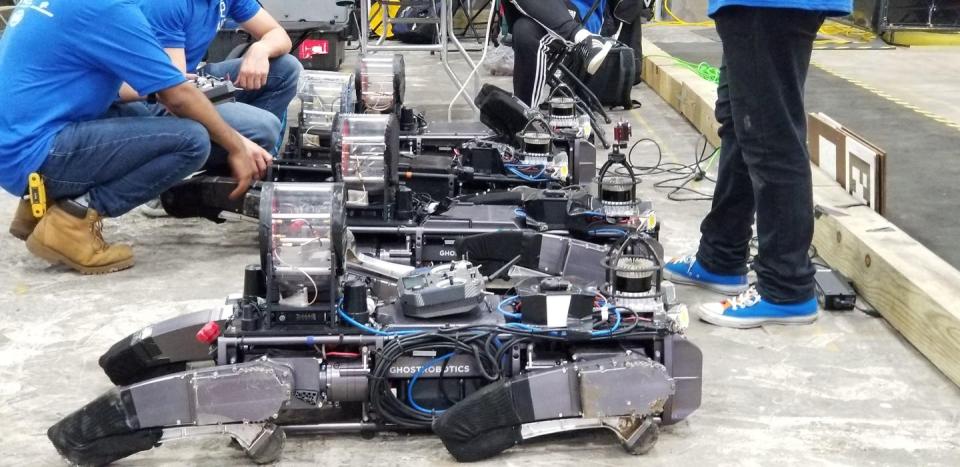
To create that Hansel and Gretel-like trail of nodes, the team's ground robot dropped colorful "anchorballs" on the ground. Each resembles a Poké Ball and contains electronics and communication hardware inside. From the outside, it blinks and strobes in shades of blue, green, and pink.
Lu demonstrated the anchorballs inside the team garage where all eleven groups cooled down and worked on their gear. With fans running in the background, creating a loud drone, Lu placed two anchorballs inside two cylindrical tubes situated at the back of the robot. He shot one out with a puff of air.
Every 100 meters, Lu said, a ball drops from the tubes. NCTU brought eight, overall, but only used four in each run.
The Challenge Begins
With everyone fitted in blue hardhats on and safety vests, the moment had arrived. But once the clock started, no humans were allowed past the orange chalk line marking the mine entrance.
With 10 teammates allowed at the mine's entrance (with some teams bringing almost double that number), only one team member is allowed to look at video footage and teleoperate the robots when things go awry, but no one else is allowed to touch the controls.
Tables are littered with low sugar Gatorade drinks, rolls of tape, safety googles and snacks. It was a long day, after all. Everyone had to turn off the WiFi, mobile data and Bluetooth on their phones, so life was only the competition running beyond the entrance tents.
Mostly, everyone relaxed, realizing they had done all they could at this point. They watched the delayed "live" feed that was slowed down to keep competitors from copying at the last minute.
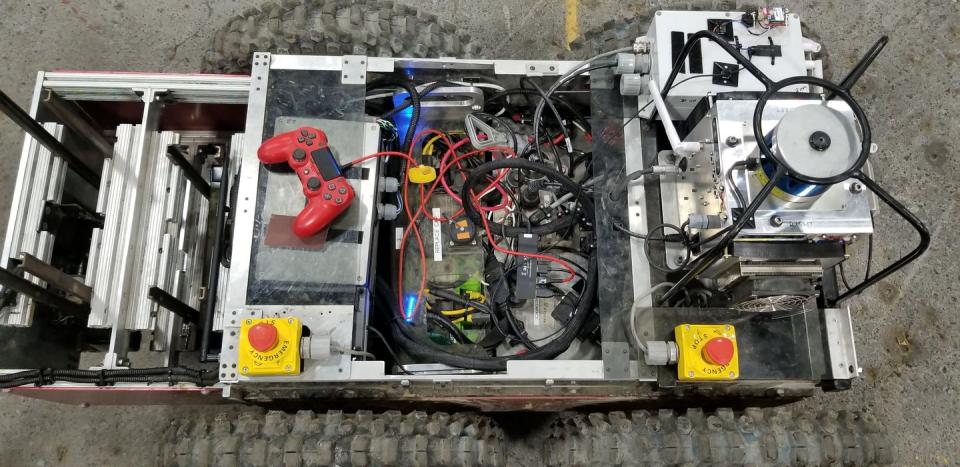
“These teams are really now getting into the groove, they’re really understanding what works and what kind of doesn’t work," Dr. Chung said. "They’re probably learning a lot more about what doesn’t work," he said with a smile.
When team Pluto scored a point for finding an artifact, the team members watching from outside cheered like jubilant fans at a football game. But concentration settled in once again because something can go wrong at any moment, depending on what obstacles are hidden within the labyrinth of tunnels.
The Prize at the End of the Tunnel
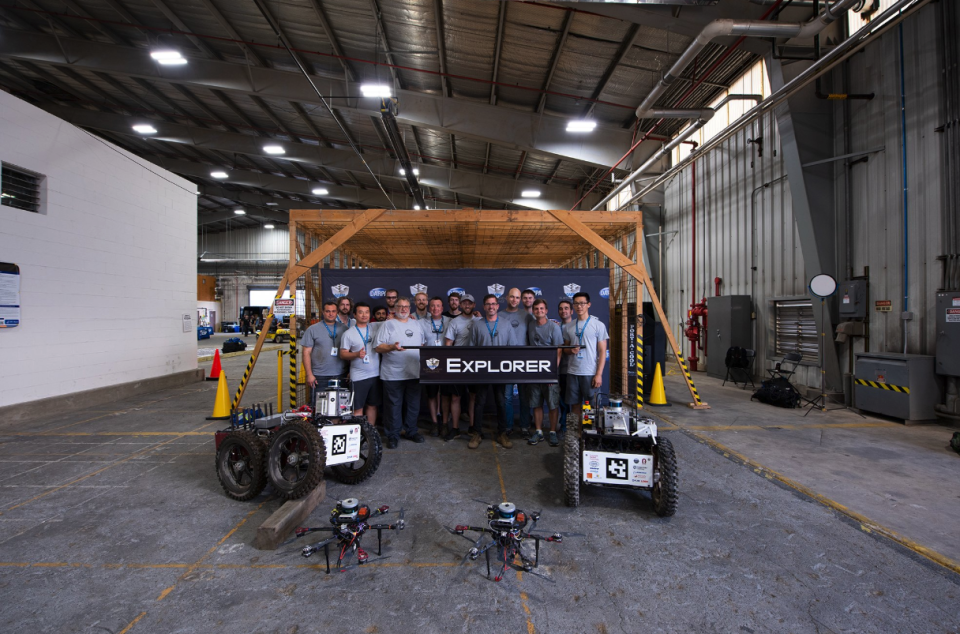
In the end, team Explorer from Carnegie Mellon won the tunnel circuit, DARPA announced early on Thursday—and the win was well earned.
Explorer regularly practiced at the Tour-Ed Mine in Tarentum, which is normally only frequented by tourists who want to check out a coal mine formerly owned by Allegheny Steel. They periodically flew drones and watched their ground robots exploring the cavernous, maze-like depths.
Team co-leads Matt Travers and Sebastian Scherer were ahead of the curve in predicting that communication would be key to winning the challenge. The team explained to the Pittsburgh Post Gazette that the team’s system will probably employ up to eight robots using a WiFi network to “talk” to one another and map their environment.
One thing is for sure, Scherer had said. As the competition progresses, the team would not hesitate to make changes to its system for each subsequent leg and perhaps borrow ideas on the fly.
We (all) are champions in the #SubTChallenge Tunnel Circuit, but points are nice, too. pic.twitter.com/0fbnvrXFlH
— DARPA (@DARPA) August 21, 2019
But the competition is far from over. The next two installments are the urban underground subdomain, sort of like a subway system underground, followed by a challenge exploring natural cave networks. The location for each is still hush-hush, but the Urban Circuit will take place in February 2020 and the cave circuit will be in August 2020. Then the final mission, which combines all three subdomains, will happen in August 2021.
Although CMU won the first portion of the challenge, all 11 teams that are still in the running for the top prize of $2 million dollars. But there's more at stake than just money. Chung says these competitions are about more than just military solutions and prize money. Just as high school football games are prime territory for college sports recruiters, DARPA challenges are rich with potential recruits—and the tech employers are hungry for them.
“The type of experience that these students or junior engineers or even senior engineers are developing out here … I imagine is the type of engineering talent and expertise and experience that we want in our industry," Chung says.
While college football has the championship game, STEM fields have the DARPA Challenge.
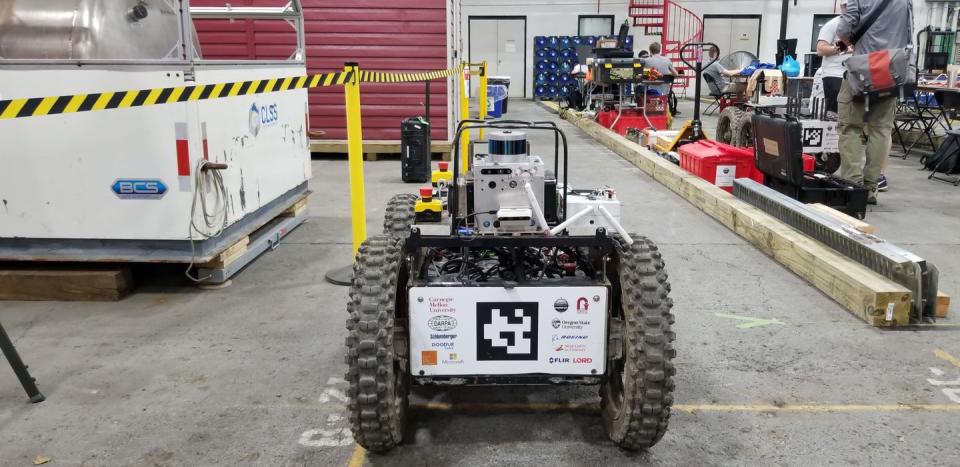
You Might Also Like

